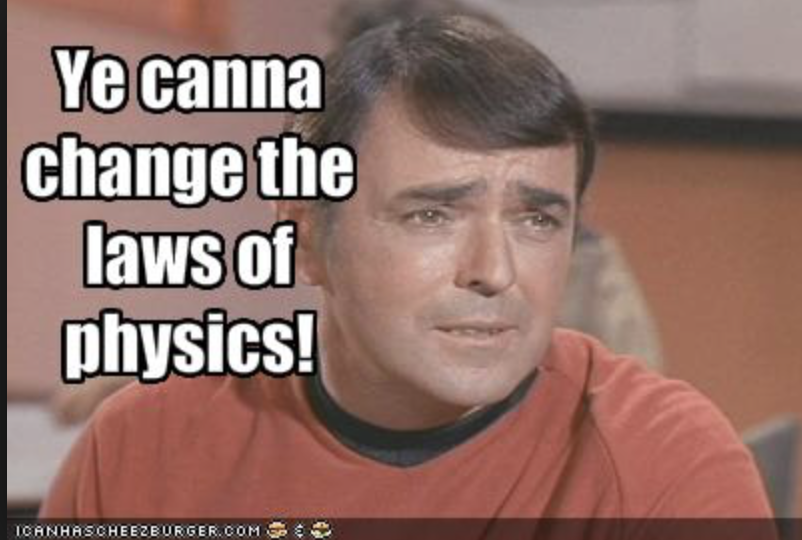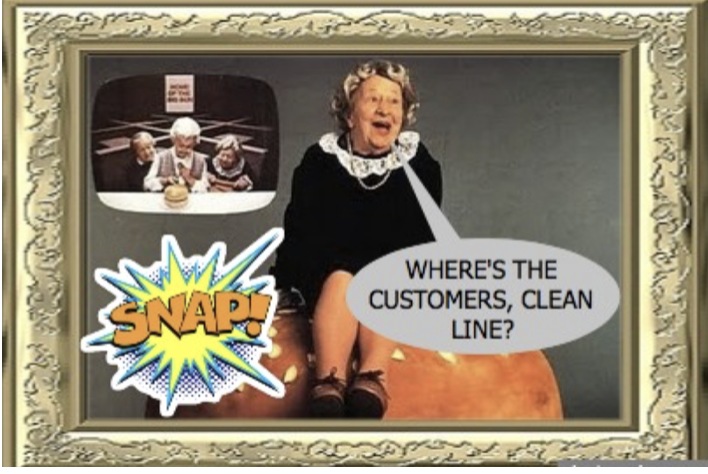The MO PSC Order was bad. Not so much in the decision they made, but in the way they tried to get there. They could have just said "we like wind energy for political reasons" or "we approve this project because the company offered to sell service to Missouri municipalities at rates so low the project wouldn't be economic if those same rates were offered to all customers." So much subjective reasoning, when objectivity was called for. Therefore, here's a summary of the dumbest things written in the order.
The Missouri converter station will have bi-directional functionality, allowing Missouri utilities an additional means to earn revenue from off-system sales of up to 500 MW of excess power into the PJM energy markets.
The HVDC technology of the Project is the most cost-effective and efficient way to move large amounts of electric power over long distances and can transfer significantly more power with lower line losses over longer distances than comparable AV lines.
The Project is a participant-funded, “shipper pays” transmission line. Grain Belt would recover its capital costs by entering into voluntary, market-driven contracts with entities that want to become transmission customers of the Project.
Under FERC requirements, Grain Belt must broadly solicit interest in the Project, the rates negotiated must be just and reasonable and without undue discrimination or preference, and the service must not impair regional reliability and operational efficiency.
FERC has specifically found Grain Belt’s process to select customers and allocate capacity to be “not unduly discriminatory”.
The easement agreement limits the landowner’s legal rights and use of the easement property, including prohibiting any landowner activity that would interfere with Grain Belt’s use of the easement.
In 2021, MoPEP’s contract with Illinois Power Marketing Company providing 100 MW of coal energy and capacity to MoPEP will expire. MJMEUC’s agreements with Grain Belt and Iron Star would help MoPEP to replace the energy from Illinois Power Marketing Company with more affordable renewable energy.
The annual cost savings to MJMEUC member cities that participate in the Project will be dollar for dollar and will likely be passed through to their residential and industrial customers in the form of rate relief or invested in deferred maintenance to their electrical distribution systems.
Grain Belt has a transmission service agreement with an Illinois load-serving entity called Realgy, which has agreed to buy 25 MW of transmission service for delivery to Missouri and 25 MW to PJM.
Wal-Mart Stores, Inc. has established aggressive and significant renewable energy goals, including: (1) to be supplied 100 percent by renewable energy, and (2) by 2025, to be supplied by 50 percent renewable energy. Additionally, Wal-Mart Stores, Inc. has set a science-based target to reduce emissions in its operations by 18 percent by 2025 through the deployment of energy efficiency and consumption of renewable energy.
Grain Belt currently has no employees.
Grain Belt has cash on hand, but not enough to complete either the development phase or construction of the Project.
Invenergy is not obligated to close on the Purchase Agreement unless (1) this Commission has approved the transaction proposed in the Purchase Agreement and has granted Grain Belt a certificate of convenience and necessity for the Project, and (2) the Kansas Corporation Commission has granted at least a 5 year extension of its certificate to Grain Belt and approved the change in ownership in the Purchase Agreement.
An interregional transmission line allows for low cost energy to be imported from a region with an excess of generation resources to a region with higher demand. The Grain Belt Project provides this benefit by moving wind power from Kansas (where there is an abundance of wind) into Missouri, MISO, and PJM, which will increase the supply of low- cost power in those markets.
Power prices in PJM are generally $10.00/MWh higher than prices that would be paid for the 500 MW of energy sold over the Project into the MISO market in Missouri. There is a very strong corporate demand for renewable energy in PJM, which contributes to Grain Belt being able to charge higher prices for that energy in PJM.
The wind industry will not need the federal production tax credit after 2023 because of continuing technology improvements.
The generation of electricity from wind energy results in no emissions, in contrast to traditional fossil fuel-fired generation. Grain Belt’s Project will provide an additional option for utilities to reduce their emissions of criteria air pollutants (e.g., sulfur dioxide), hazardous air pollutants (e.g., mercury), and carbon dioxide by purchasing cleaner renewable power for delivery on the transmission line in lieu of using existing or constructing new fossil fuel-fired generation assets.
The renewable energy delivered by the Project will reduce emissions in the Eastern Interconnection by displacing thermal generation, which emits sulfur dioxide, nitrogen oxides, and carbon dioxide, and will decrease water usage, all to the benefit Missouri’s environmental and public health.
The Project would have a substantial and favorable effect on the reliability of electric service in Missouri.
Approximately $14.97 million in easement payments will be made in the first year of Project operation.
Grain Belt developed the Missouri Landowner Protocol as part of its approach to right-of-way acquisition for the Project.
Grain Belt’s compensation package is superior to that of most utility companies.
If Grain Belt obtains an easement from a landowner, the property will still belong to the landowner and can be utilized for activities such as farming, recreation, and other activities that do not interfere with the operation of the transmission line. After construction of the facilities, the landowner will retain the ability to continue agricultural production on the entirety of the easement area except for the relatively small footprint of the structures, which typically occupy less than 1% of the total easement area.
If Grain Belt and a landowner have reached agreement on the form of easement but are unable to reach agreement on the appropriate compensation, then at the landowner’s request, Grain Belt will submit the issue of landowner compensation to binding arbitration under Missouri law. The option of binding arbitration typically costs less, has more simplified procedures, and results in a final decision more quickly than circuit court litigation.
Out of the 206 miles that the Project will traverse in Missouri, no more than nine acres of land would be taken out of agricultural production as a result of the structures installed for the Project in cultivated lands.
Grain Belt has created the Missouri Agricultural Impact Mitigation Protocol, which establishes standards and policies to avoid, minimize, or mitigate any negative agricultural impacts that may result due to transmission line and converter facilities construction and operation.
Grain Belt witness Richard J. Roddewig testified credibly that based on published research and Mr. Roddewig’s own research, transmission lines do not have a significant adverse impact on farmland prices and values.
The scientific weight of evidence does not support the conclusion that electric and magnetic fields cause any long-term adverse health effects, and the levels of electric and magnetic fields associated with the Project do not pose any known risk to human health.
Missouri courts have stated that for a company to qualify as a public utility, the company must be devoted to a public use for the general public. The evidence showed that when the Project is constructed and begins operation, it will transmit energy from wind farms in Kansas to wholesale customers in Missouri. In the case of MJMEUC, those customers are Missouri cities and towns that serve as electric providers to approximately 347,000 Missouri citizens. The hallmark of a public utility is the offering of utility service to the public without discrimination. Grain Belt will offer indiscriminate transmission service through an open access transmission tariff that will be filed and subject to the jurisdiction of FERC. While the Commission only has authority over facilities that are devoted to public use, an entity that constructs and operates a transmission line bringing electrical energy from electrical power generators to public utilities that serve consumers is a necessary and important link in the distribution of electricity and qualifies as a public utility. The Commission concludes that Grain Belt’s Project will serve the public use, and Grain Belt qualifies as a public utility.
I've long been of the opinion that regulatory decisions are not the product of careful evaluation of competing facts that lead to a conclusion. Instead, it happens backwards, with the conclusion shaped by political factors, and then supported by a sifting of the evidence to find only the facts that support the previously reached conclusion. This decision by the MO PSC is a prime example of this kind of political regulation. How very disappointing.


 RSS Feed
RSS Feed